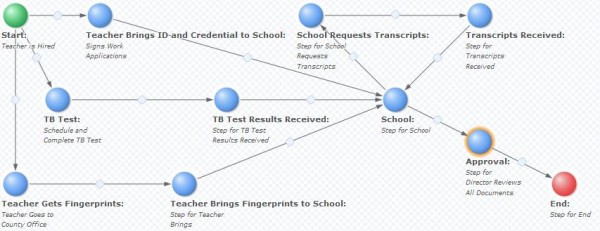Automated workflow series brought to you by: Comindware, web-based software solution for automating and managing business workflow processes
Part 1: Success Sooner: Automated Workflows Help You Focus
Part 2: Success Sooner: Get Rid of Routine Work and Increase your Income
“We can’t solve problems by using the same kind of thinking we used when we created them.”
– Albert Einstein
Do any of these problems sound familiar?
- Last minute edits from the Subject Matter Expert confuse the production team and delay getting an important document out the door (again).
- A certain software bug exists in three of your products but the developer only knows to work on one of the products. She wasn’t at the meeting where the bug proliferation was discussed, and no one on the team realizes this (and oh, by the way, your next release goes to market in two weeks).
- You get called in to the Board Meeting at the last minute to give a status report on a major project, but you honestly have no idea where things stand (your main go-to person isn’t in today).
- You don’t get the funding you needed because you couldn’t quickly provide a snapshot of past allocations (which makes you wonder how many other funding opportunities you are missing).
They should sound familiar, because they are incredibly common as the logical consequence of collaborative teams
- Suffering from hidden bottlenecks;
- Not knowing tasks and priorities, especially as things change;
- Not managing workflow processes; and
- Lacking accountability and audit trails.
There could be many other examples, something I like to call “crispy stories,” and they aren’t industry-specific. How about: You are the owner/director of a leanly funded private school and regulations about teacher onboarding mean you must provide proof during surprise audits that all documentation for each teacher is in order. But you basically have no administrative staff and you worry deeply about your ability to meet this requirement; teachers come and go rapidly, making it very difficult to keep track. Did the fingerprints come in? Did the transcripts arrive? How about the TB test results? The consequences for failing to comply are quite serious. What’s more, on the day of an audit, one of your teachers has called in sick (again), and you are subbing in the classroom.
Crispy, no?
What do you do?
Well, you go back in time and implement an automated workflow processing system that you can customize to keep track of documentation along a pre-determined path. It would look like this:
You would have become quite fond of this system. You might have named it Rita.
You would start Rita at the time of a new hire, thereby generating the following tasks:
- New hire goes to county offices for fingerprinting
- New hire brings fingerprinting paperwork back to school
- Part-time secretary requests transcripts from teacher credentialing university
- New hire goes to physician for TB test
- Part-time secretary contacts the new hire’s physician for TB test results
- New hire brings in I.D. and teaching credential documentation
- Each of these tasks is promoted to the next step, as appropriate
- At the final step, the director receives tasks to review, approve, return, or promote each piece of documentation
- The result is that the pieces of documentation exist independently (so they don’t fall through the cracks) but also as a whole (so that it’s clear when any given teacher has a complete file).
If a certain document does not come in, Rita relentlessly and automatically nags people that things are overdue and so on. The workflow itself shows what status each piece is in, and any audit that might take place can be satisfied quickly on a real-time basis.
No longer crispy, but smooth, freeing you up to bring in more families, improve your curriculum, reach out the community, observe your teachers, and greet the parents during pick-up hours.
The trick is to see the solution differently than the problem, as Einstein suggests in the above quote. See the solution as a diagram, a flow, a process. But don’t settle for a “dead picture,” as I warned in last week’s post. Don’t fall for a “solution” that basically replaces a piece of white paper and a set of colored markers. No, find a solution that is actually a computed process, so that when you are finished creating it, it actually goes to work for you automatically generating tasks, keeping track of their status and moving things along the queue.
You can find out more about Comindware at www.comindware.com
About the author: Kamille Nixon writes about how growing businesses solve their problems with tools built on a variety of types of databases, both graphical and relational. One of her articles made #5 of Information Management’s Top 10 Stories of 2011.





